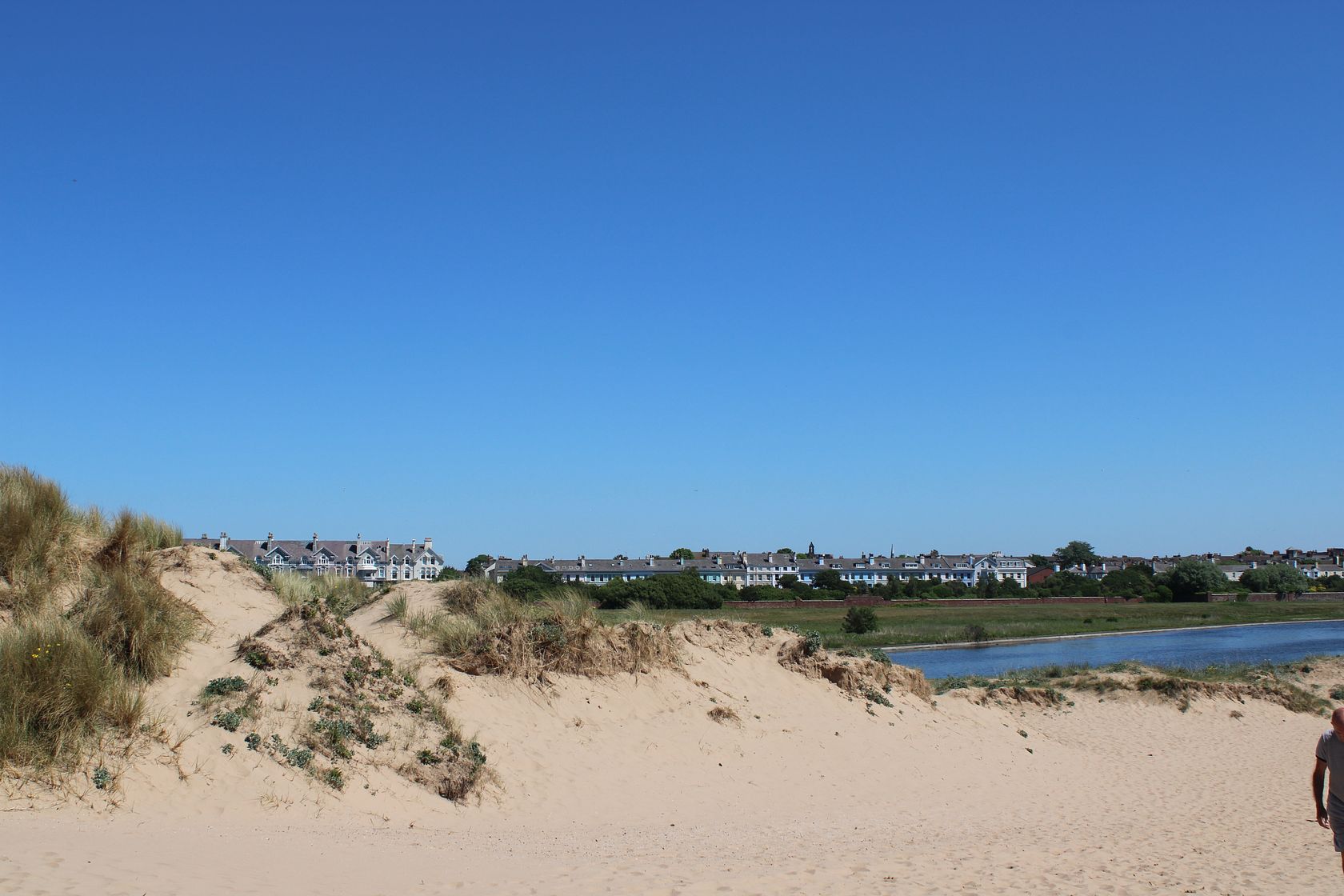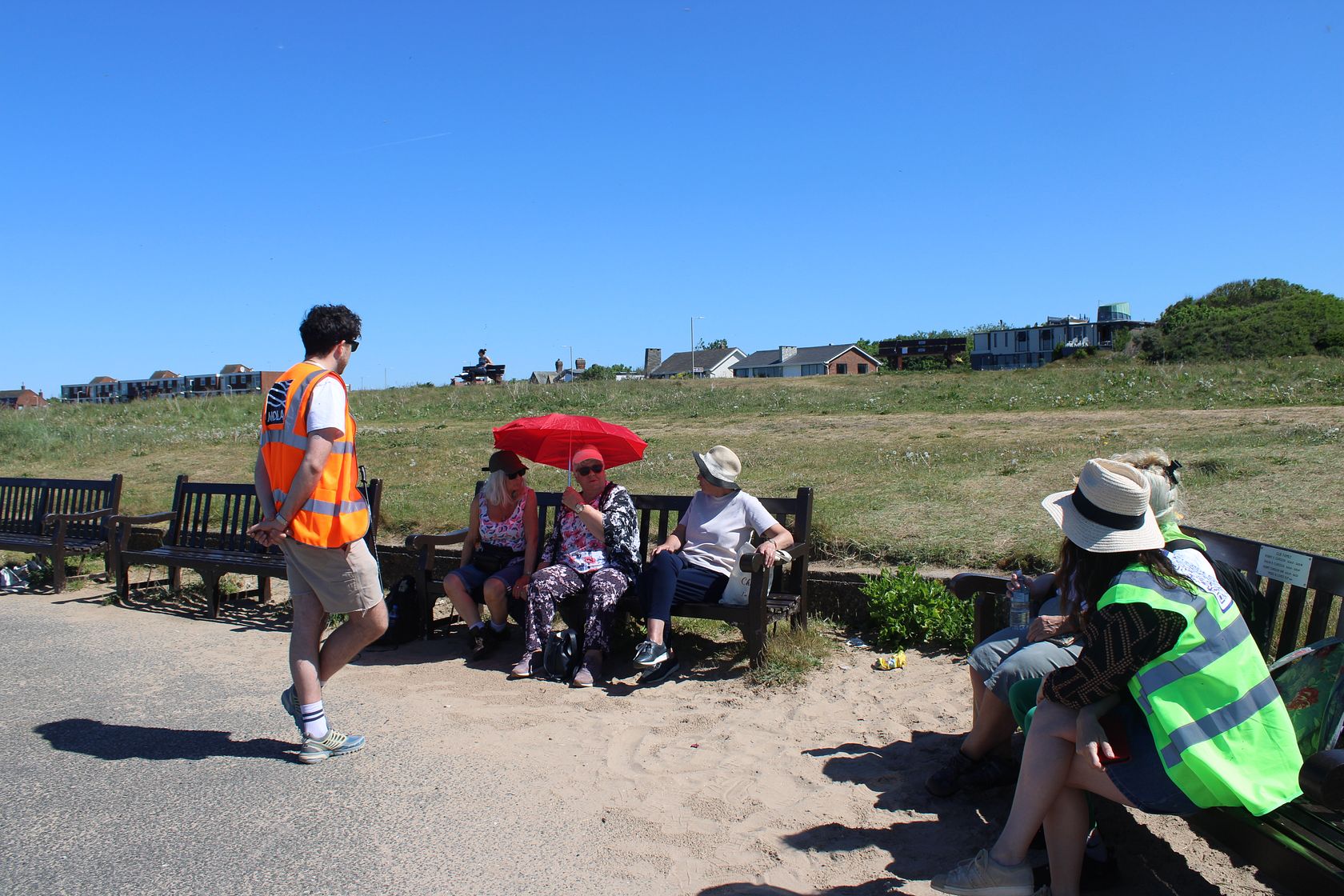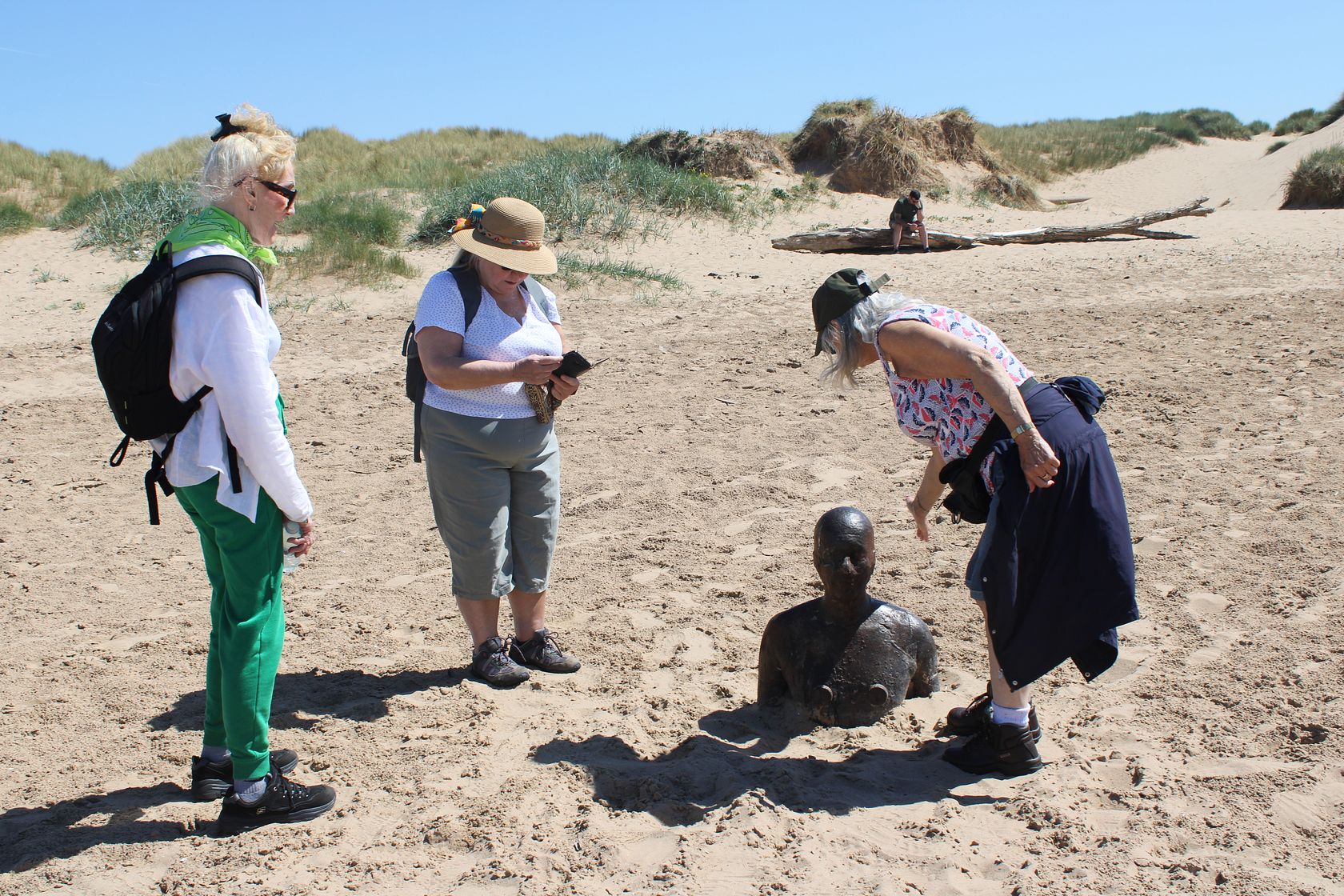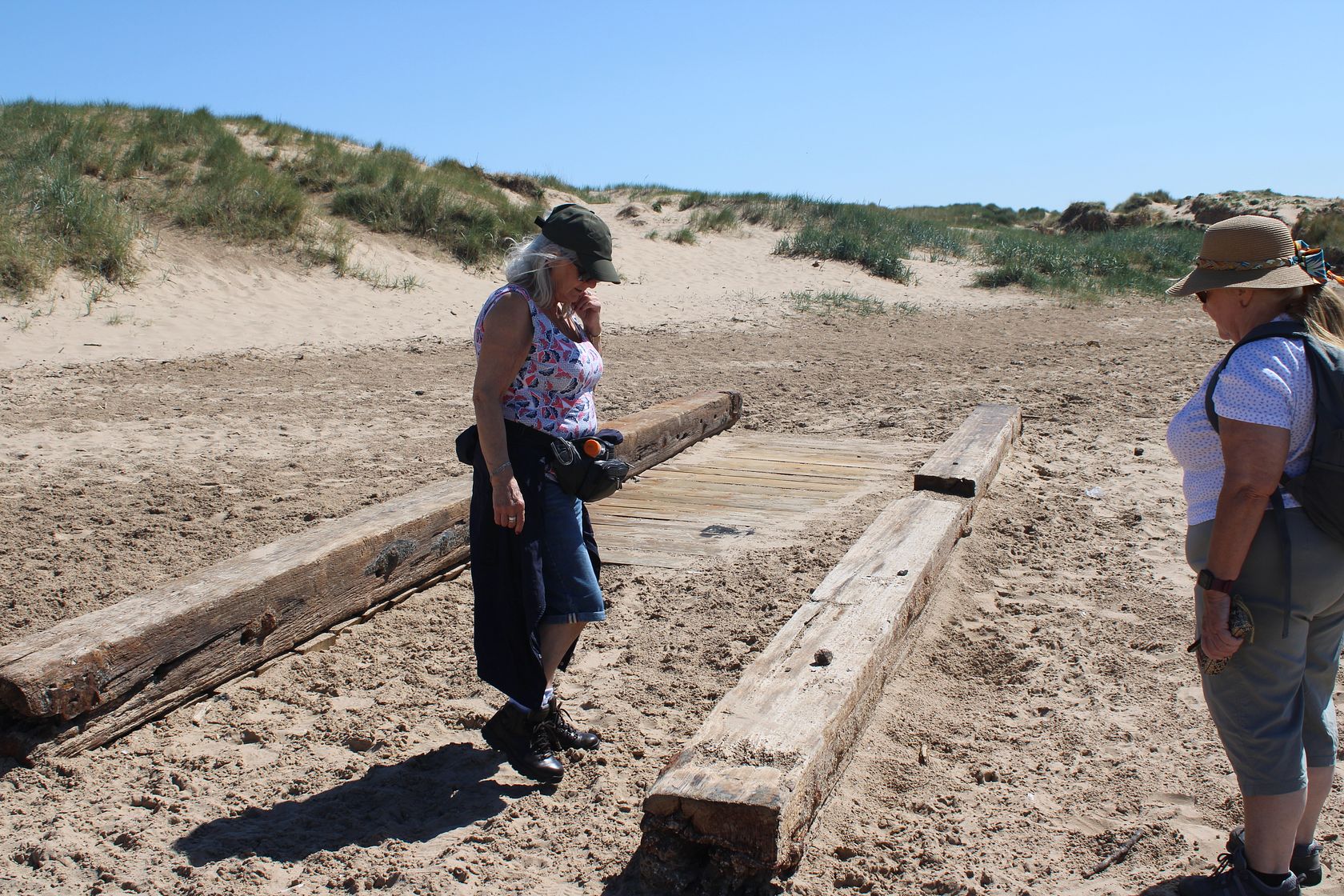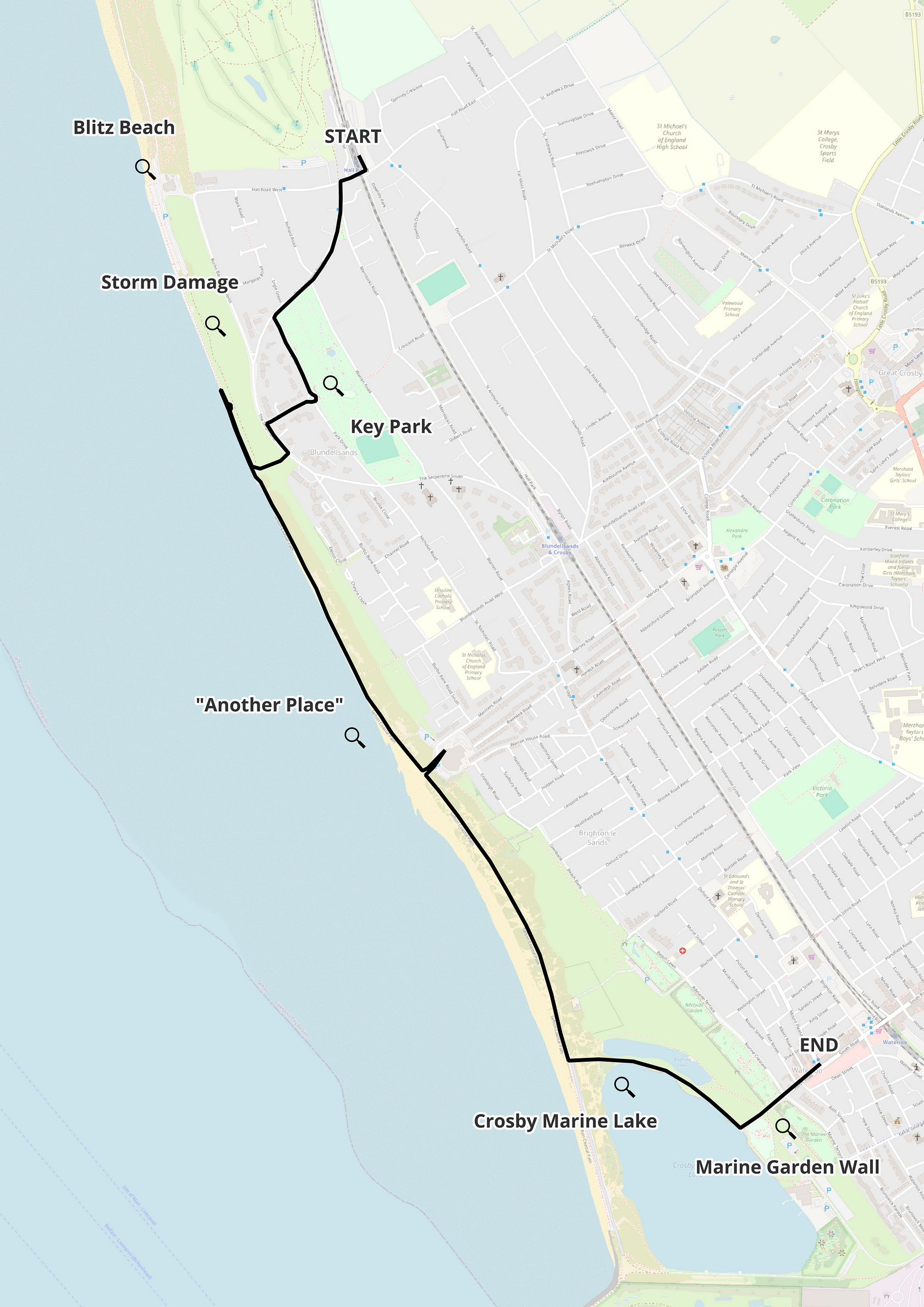Tree lined street adjacent to Key park
Memory walk from Blundellsands to Crosby Marine Lake
Earlier this month, we teamed up with Age Concern to host a Memory Walk along the Crosby seafront. From Hall Road Station to Blundellsands, taking in the area of storm damage towards the Crosby Marine lake along the promenade partially covered with the encroaching dunes. Part local history tour, part gentle ramble and part storytelling circle we were treated to sunny skies and great views all the way to Snowdonia.
We kicked things off at Hall Road train station, where we muster, all eager to stretch our legs and our memories. The first stop was Blundellsands Key Park, a tucked-away gem many people don’t even realise is there unless you’re lucky enough to hold one of its 800 keys. Only L23 postcode residents can join, and even then, you’re only allowed 2 guests. The park has been around since 1905 when the Blundell family gifted it to local residents, and it’s still protected as a Site of Local Biological Interest.
From the park, we meandered down the Serpentine Road towards the site where several houses were lost to coastal erosion in the 1930s. Originally built in the 1800s as sizable homes for wealthy merchants, they are named on early maps as ‘Netherwood’, ‘Beachside Towers’ ‘Red house’ and ‘Holmside. We shared photographs of the damaged shoreline and spoke about our memories of the area and how it has changed over the years. Some participants remembered before the sea wall was built and another spoke of the rough crossing over to Ireland in the 1970s from just down the coast at the Docks. Perhaps the most striking memory was from a lady who as a child in the early 1950s, remembers seeing the remains of the roofs poking out from the sand before the sea wall was constructed. It's one thing to read about erosion but hearing first-hand how the landscape literally swallowed homes really brought our historic photographs to life.
Next up was the Crosby ‘Blitz’ beach, a large area of bricks and concrete rubble taken from the nearby bomb-damaged buildings of Liverpool and placed along the shore as erosion defence. Some of that rubble came from WWII bomb sites, dumped here to help stop erosion. This prompted discussion of World War two and many of our participants spoke of their family’s role during the war and the importance of protecting Sefton’s Bootle docks from German bombing. The beach stretches all the way from Crosby to Hightown, and despite the man-made defences, the coastline is still moving—about 4 metres a year. We then discussed the winter storm of 2013 which shifted nearly 10 metres of rubble off the beach overnight.
As we made our way along the promenade, we noticed how parts of it have disappeared under the sand and have started to turn into sedentary sand dunes with marram grass cementing it in place. As parts of the promenade are under SSSI protection, they cannot be cleared which we learned was a bit of a bone of contention for the local community! We then had a great discussion about the conflict between re-wilding and the accessibility issues posed by a sand covered promenade. Seeing the active effects of accretion was really interesting as we had seen the destructive effects of erosion just 15 minutes before.
Then came the statues, Antony Gormley’s "Another Place". Always a favourite, but this time we looked a bit closer at how the sand levels around them vary. Some are buried to the waist, others with their bases exposed highlighting the changeability of the sandbanks at the mouth of the Mersey. Our walkers spoke about how they felt when the statues were first installed in 2007 and the general consensus was that they are a great addition to the area but must be a nightmare for the local lifeguards as they look like people stuck in the sand!
We also spotted some enormous old wooden beams washed up on the beach—maybe bits of a breakwater or dock? Whatever they were, we were fascinated!
From there, we strolled past Crosby Marine Lake, built in 1972, and finally reached a local café for a well-earned break and a memory-sharing workshop where we met more participants who could not join on the walk. One lady told us that before the sea wall and lake were built, the sea used to come right up to where we were sitting.
She also remembered the flotsam and jetsam she and her siblings would play with as kids, washed up on the beach from Liverpool’s port just along the river. Another lady dropped a gem of local trivia, that the café we were in used to be a public toilet! Proof, once again, that local knowledge is absolute gold.
All in all, it was a great day gentle walking with a lot of history hiding in plain sight. We’re already looking forward to doing another memory walk on another area of the Sefton coast that has also been shaped by change. If you missed this one, keep an eye out and sign up for our next one.
Memory walk from Blundellsands to Crosby Marine Lake
